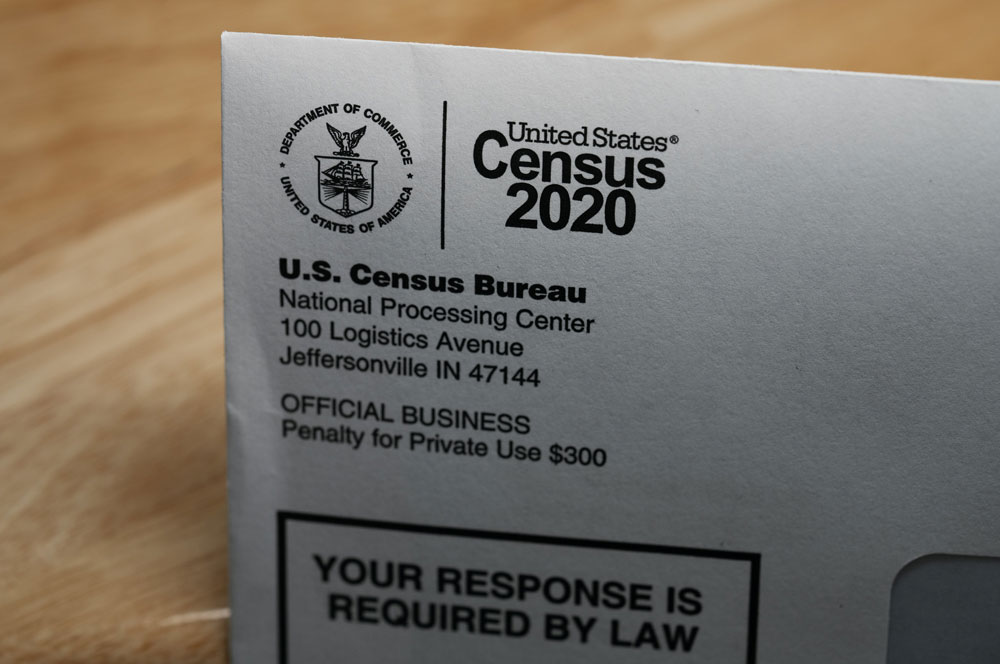
May 12, 2020; Vox
After two months of suspended US Census Bureau field operations, the agency is beginning a phased resumption of in-person engagement efforts. But some fear irreparable damage to the count among communities of color has already been done.
Before the coronavirus pandemic, advocacy groups like civic nonprofit California Calls’ California Black Census and Redistricting Hub planned multifaceted outreach campaigns to communities of color that included digital advertising, social media, telephone calls, and, of course, door-to-door canvassing. With on-the-ground contact eliminated by distancing in the wake of COVID-19, organizations now face unprecedented challenges to ensure historically underrepresented groups are counted.
In California and Texas, congressional districts with heavily Latinx populations are falling behind state and national response rates as the coronavirus remains top of mind. Puerto Rico has only an eight percent response rate. And while the pandemic has had a disproportionate impact on Latinx communities, the fallout from last year’s citizenship question debacle, coupled with the Trump administration’s antagonistic immigration and citizenship policies, has subverted the importance of taking part.
An inaccurate count puts billions of tax dollars at risk for communities that often need funding the most for health programs, emergency services, infrastructure, Medicaid, and so on. Further, census data affects congressional representation; state Electoral College votes; and can transform local, state, and federal legislative district lines. Last year, the Urban Institute projected a 2020 undercount ranging from 0.27 percent to 1.22 percent. In short, as many as four million people, many of whom are from vulnerable and/or disadvantaged communities, could be left without representation. And that was the estimate before a pandemic made enumeration far more challenging.
As with many institutions, the scale of the pandemic caused a cascade of problems the Census Bureau has been ill-equipped to handle. After all, the inaugural launch of the online census was meant to be the major process shift for 2020; while uniquely suited to a public health crisis that requires staying indoors, the country’s gaping digital divide inherently undermines the conditions for carrying out an equitable count.
Meanwhile, talks of statutory deadline extensions for the census from December 31, 2020 to April 30, 2021, depend on congressional approval and could conflict with some states’ redistricting laws and scheduled 2021 statewide elections in New Jersey and Virginia. A proposal for $400 million in emergency assistance for the Census Bureau, is pending in what is a contentious $3 trillion HEROES Act proposal.
Sign up for our free newsletters
Subscribe to NPQ's newsletters to have our top stories delivered directly to your inbox.
By signing up, you agree to our privacy policy and terms of use, and to receive messages from NPQ and our partners.
Even before the pandemic, the census had a strained relationship with communities of color. As Vox reports, “Data shows that people of color, children, seniors, undocumented immigrants, people with disabilities, LGBTQ folks, Native people in tribal areas, the homeless, and low-income people are among the least likely to be counted accurately in the census.”
People of color sometimes are reluctant to participate in the census, due to fear that the data they provide might be misused. Unfortunately, there is precedent for this: although it was against the law, census data was nonetheless used to relocate and incarcerate more than 120,000 men, women, and children of Japanese descent during World War II.
More recently, the US Department of Commerce’s failed attempt to include a citizenship question was, according to the rulings of multiple federal judges, certain to discourage participation by immigrant and refugee populations, by playing on immigrants’ fears that data from their answers might be illicitly conveyed by census officials to US Immigration and Customs Enforcement.
These tactics and others, such as using an incarcerated person’s place of imprisonment over their most recent place of residence for gerrymandering purposes, have sowed distrust between communities of color and census activity. But the count is so crucial to dismantling longstanding systems of inequity through an accurate representation of America’s diverse makeup that engagement campaigns remain a top priority for many civic-minded organizations. As Donna M. Owens writes for Vox:
Then there is the on-the-ground—or now virtual—work of making sure people are not only aware the census exists but also fill it out. Some groups are getting creative: Color of Change hosted a drive-through community dinner in New Orleans outside Burnell’s Market in the Lower Ninth Ward last month—a few hundred attendees completed census pledge cards and received a catered meal. Meanwhile, campaigns like Census Counts work with dozens of national, state, and community-based organizations and a network of elected officials to ensure a fair and accurate process.
Congressional leaders including the Congressional Asian Pacific American Caucus, the Congressional Black Caucus, and the Congressional Hispanic Caucus—also known as the Congressional Tri-Caucus—are advocating on behalf of often omitted voices at the federal level, but the road to an accurate count remains steep. Outreach strategies have been transformed by our current health crisis, but strategies do exist, and it is up to us to continue connecting with our communities, explain that the census is happening right now, and remind people that, as community organizer Antionette Saddler put it, “they do matter, that they do count.”
As of this writing, the 2020 census national response rate is at 59 percent, 48 percent of which was completed online. The final national self-response rate for 2010 was 66.5 percent.—Drew Adams













